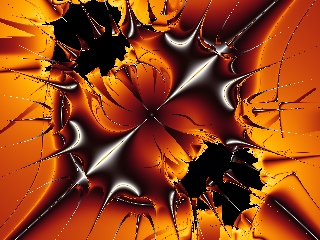
Cardiac Chaos
HON 462
R. A. DiDio
La Salle University
The Cardiac Chaos show will be run by Amy Baran & Josh Fantini . Click
here
to view the PowerPoint presentation.
Date: Wednesday, March 12, 2003
Readings
- Inner Rhythms, (the next-to-last chapter in Gleick)
- The Chaotic Rhythms of Life, Robert May, (Ch. 7 in the Exploring Chaos text)
- Sudden Death is Not Chaos, Barry Goldberger, David Rigney , (from The Ubiquity
of Chaos, AAAS 1989)
- Dynamics of Cardiac Arrhythmias, Leon Glass, Physics Today, August, 1996
- Controlling Cardiac Chaos, Alan Garfinkel, Mark Spano, William Ditto, James
Weiss, Science vol 257, August 28, 1992
- The
role of nonlinear dynamics in cardiac arrhythmia control
D. Christini et al., Heart Disease, 1 pp. 190-200 (1999).
Other Background Reading/Sites
- Read more about D.Christini's work at the Cornell
Cardiac Electrodynamics Laboratory. There you'll find many reports on
computational, experimental and clinical aspects of nonlinear dynamics and
cardiac studies.
- Before Chaos was a household word, Arthur Winfree wrote a very accessible
Scientific American Article that foresaw the issues of non-linear cardiac
dynamics in Sudden Cardiac Death: A Problem in Topology (Scientific American,
1983). This is the work described in the Inner Rhythms chapter in Gleick.
- Mastering Chaos, Ditto and Pecora, Scientific American, August 1993 (W.
Ditto is one of the authors in the Controlling Cardiac Chaos article listed
above.)
- From Clocks to Chaos: The Rhythms of Life, by Leon Glass and Michael MAckey,
Princeton Press, 1988. The complete description of spatial and temporal chaos
arising from their landmark studies of the chicken heart.
- Late-breaking news (Jan. 2003) from the MAx Planck Institute concerning
Chaos in the
Heart and "new methods for terminating cardiac fibrillation."
- Why not branch out to Chaos in the Brain/Mind/Consciousness: check out the
Walter
J. Freeman Neurobiology Full Manuscript Archives where you'll find interesting
articles discussing the use of Chaotic dynamics in modeling perception and
the applications of Neurodynamics in the behavioral sciences.

